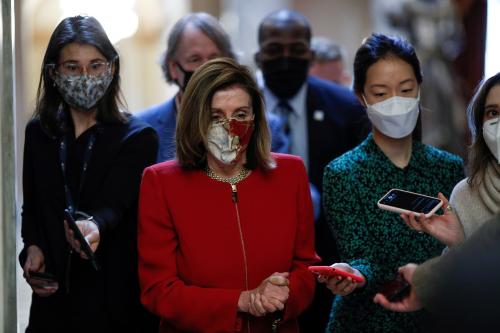Congress is on the verge of giving a $120 billion windfall to the top 1 percent in its pending COVID relief bill. It shouldn’t do that.
Tucked into the bill is a provision to allow businesses to deduct expenses that were paid for by the government’s Paycheck Protection Program (PPP).
Normally, a business owner may deduct only expenses they actually paid for. (“This is basically Tax 101,” Treasury Secretary Steven Mnuchin noted in May in defense of IRS guidance that said businesses cannot deduct expenses covered by the forgivable PPP loans.) Passing legislation to allow businesses to pay their expenses with taxpayer-provided PPP funds and then to deduct those expenses against their own taxes would be a windfall to high-income business owners—a windfall that would exceed the amounts that Congress is considering in unemployment insurance, rental assistance, food aid, or healthcare.
For background, the PPP provided funds to certain business owners to pay employees and cover other expenses. By shouldering employer costs of paying employees, the program appears to have been effective in stemming job losses and keeping businesses from going under. The PPP benefitted both workers and firms: The workers got paid, and the business owners were spared some of the cost of operating a business. If that was the end of the story, we could conclude that it was fair and effective.
But after passage of the CARES Act, business owners began lobbying for more: They wanted to deduct the expenses paid for by the PPP. The Tax Policy Center’s Steven Rosenthal provides a good summary of the tax issues. To summarize, business owners would benefit not only because the government paid for their labor and other expenses (which boosts the business owners’ take-home income), but again when they file their taxes. Every dollar of additional expense a business deducts on its tax return reduces the taxes paid (or refunds received) by a business owner.
To go through the math of how large that benefit is, the top rate on ordinary income today is 37 percent. But taxpayers today can carry back any unused deductions incurred this year to 2017, when the top rate on ordinary income was 39.6 percent (and 35 percent for corporations). Business income and ownership is concentrated in the highest income groups—for the relevant group of pass-through business owners, about 70 percent of business income is earned by the top 1 percent of taxpayers. Hence, most of those deductions would be used by high income-taxpayers and save them $0.37 to $0.396 in taxes for each dollar they deduct.
In short, it’s a benefit targeted to the trifecta of inequity: (1) you need to own a business sophisticated enough to get a PPP loan; (2) the more income you have, the more you benefit; (3) your benefit is largest if you’re in the highest tax bracket.
And the windfall is enormous. Through August, businesses have received $525 billion in PPP funds, of which perhaps $500 billion accrued to businesses that would benefit from deductibility. (This excludes non-profits, which do not pay taxes, and sole proprietorships, for whom deductibility is less relevant because they do not deduct salary expenses for themselves.) The bipartisan proposal—the final bill that comes to the floor may be different—provides about $268 billion more in PPP funds. If we assume the total PPP funding will come to $700 billion and the average tax rate of business owners is 29 percent, that is a tax windfall of $203 billion. Even if only 60 percent of this goes to the top 1 percent, that’s a $120 billion windfall for well-off business owners.
For perspective, the $203 billion tax cut is more than the $180 billion that the bipartisan compromise proposal provided in emergency unemployment insurance, and vastly exceeds its $25 billion in rental assistance, $51 billion for healthcare, or $82 billion for education. Those provisions will help workers put food on their tables, allow families to avoid eviction, and provide healthcare services to those struck by the disease. The tax windfall, however, has little economic upside because it will be retroactive and based on what happened a year earlier, and provides no incentives for new hiring or investment.
Unfortunately, the cost of the tax change won’t be scored or analyzed by the Joint Committee on Taxation. In their original estimate of the CARES Act, they failed to account for the fact that expenses would not be deductible. That means they overestimated the cost of the original bill. So now they plan to ignore the tax cut in subsequent legislation. Two wrongs should not make a right.
Many Americans are struggling, and many business owners are too. It’s imperative that Congress pass targeted relief. The PPP, unemployment insurance extension, and other targeted provisions in the relief act are worthy of passage. But high-income taxpayers don’t need a windfall.






Commentary
Op-edCongress shouldn’t give a $120 billion windfall to the top 1 percent as part of its COVID relief bill
December 16, 2020